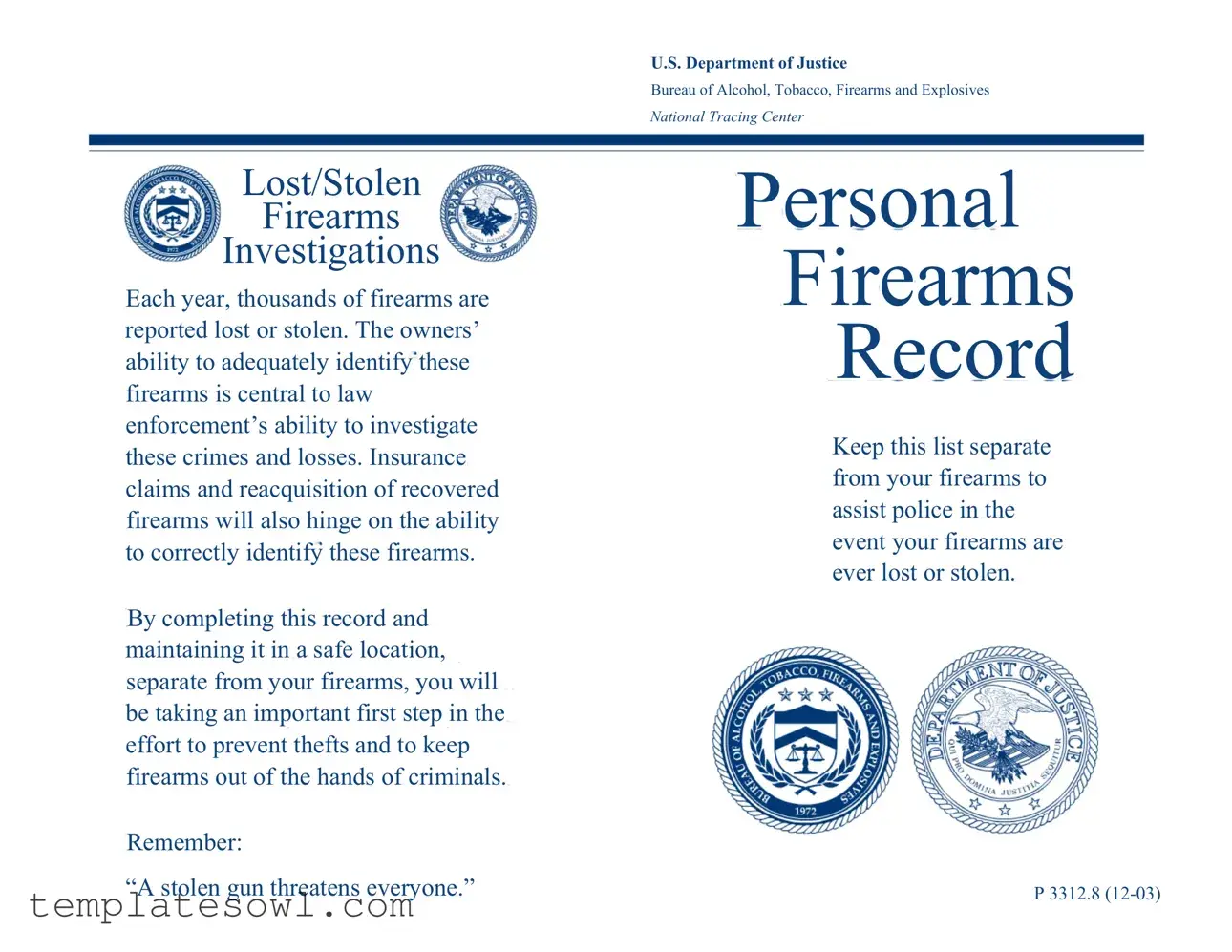What is the Personal Firearms Record form?
The Personal Firearms Record form is a document for firearm owners to record essential information about their firearms. It includes details such as the manufacturer, model, serial number, and where the firearm was purchased. This record serves as a crucial tool for both law enforcement and the owner in protecting against theft and in identifying lost or stolen firearms.
Why is it important to keep a Personal Firearms Record?
The importance of maintaining a Personal Firearms Record cannot be overstated. Each year, many firearms are reported lost or stolen, and accurate records can significantly aid law enforcement in their investigations. Additionally, having this information can facilitate insurance claims and the recovery of firearms, should they be recovered after theft.
How should I store my Personal Firearms Record?
For maximum effectiveness, the Personal Firearms Record should be stored in a safe location, separate from your firearms. This precaution ensures that if your firearms are lost or stolen, you still have immediate access to critical identification information. Consider storing it in a fireproof safe or a secure digital format with backups.
What information should I include in the form?
When filling out the Personal Firearms Record, include the following details for each firearm: manufacturer or importer, model, serial number, type and caliber or gauge, date acquired, cost, and purchase location (including the name and address). This thorough description is essential for law enforcement in tracking and recovering firearms.
What should I do if my firearm is lost or stolen?
Immediately report any theft or loss of a firearm to your local police. Providing them with the details from your Personal Firearms Record will assist in their investigation. Quick reporting increases the likelihood of recovery and helps to prevent the firearm from being used in criminal activity.
Can I use the Personal Firearms Record for insurance purposes?
Yes, the Personal Firearms Record can be invaluable when dealing with insurance claims. Documentation of ownership, costs, and detailed descriptions of your firearms will help substantiate your claim if they are lost or stolen.
What should I do if I acquire a new firearm?
Each time you acquire a new firearm, be sure to update your Personal Firearms Record. Adding the new firearm’s information promptly ensures that you maintain an up-to-date record, which is essential for identification and protection against theft.
Is there a cost associated with obtaining or maintaining the Personal Firearms Record?
No, there is no cost associated with the Personal Firearms Record form itself. It is a recommendation from the Bureau of Alcohol, Tobacco, Firearms and Explosives, and you can create and maintain your own record using simple documentation methods. The investment of your time in creating and keeping this record can dramatically increase your level of protection.
How does keeping a Personal Firearms Record help prevent theft?
Keeping a Personal Firearms Record helps prevent theft by facilitating immediate action and aid in the recovery process should theft occur. A thorough record empowers law enforcement to track and identify stolen firearms, thereby deterring potential thieves who know that owners have documentation to support their claims.
What are the consequences of not having a Personal Firearms Record?
Lacking a Personal Firearms Record can lead to significant challenges if a firearm is lost or stolen. Without detailed information, owners may face difficulties in proving ownership or filing an insurance claim. Additionally, the absence of this record can hinder law enforcement's ability to recover stolen firearms, leaving both the owner and the community vulnerable.


